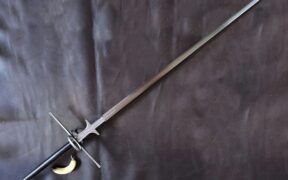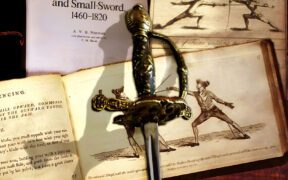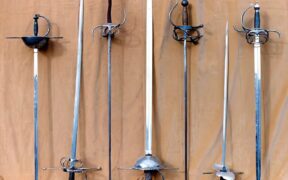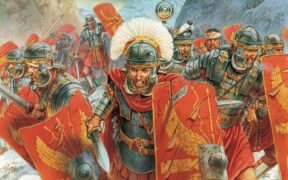Our content features commercial links to our products, committed to transparent, unbiased, and informed editorial recommendations. Learn More
The Cinquedea Sword That Was Beloved by Renaissance Artists
NO AI USED This Article has been written and edited by our team with no help of the AI
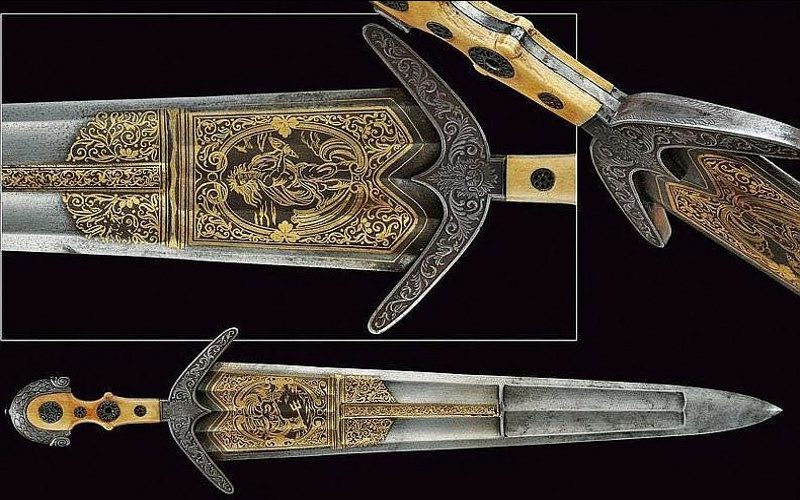
The Cinquedea is a short sword or dagger that was beloved and widely used in Italy during the Renaissance period by both civilians and the militia alike. It is a very unique-looking shortsword that did not achieve so much renown outside of Italy but is a very interesting Renaissance effort to bring some ancient form and function into its aesthetic.
In this article, we shall be looking at the Cinquedea Sword. You will find out about its very unusual and grand-looking characteristics. Then we shall explore the many uses that this short sword had and conclude with its history while also answering the question of if it is considered a dagger or truly a sword.
Characteristics of the Cinquedea Sword
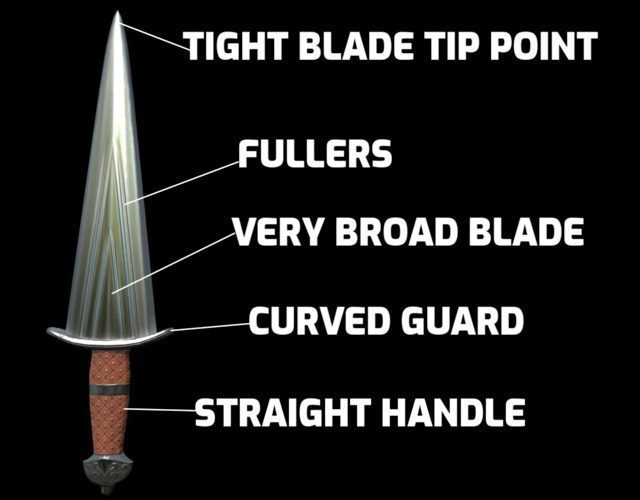
The Cinquedea is one of the easiest short swords to recognize since it is very grand and unique looking. The most noticeable characteristic of it is that it’s short and more or less the same length as a dagger but has a very wide blade, especially at the neck, that tightens to a very small tip at the end.
Blade
The blade of the Cinquedea Sword is straight, double-edged, and does not have any curve to it. You could most certainly say that it is shaped like an isosceles triangle. Its blade also has a couple of fullers, which are the divots carved out to make the whole sword much lighter.
Cinquedeas are often heavily decorated with the wide point of the blade commonly used as a canvas for many decorations. The overall length of the blade for the Cinqudea is 17 inches long (43 cm).
Guard
The guard of the Cinquedea sword is curved, usually in the shape of the letter C. This type of guard was mostly for looks but also offered some stability for the user’s hand. Its quillons, or the two sides of the guard, were usually very broad.
Handle
This short civilian sword had a straight handle which offered both leverage and strength for thrusting and slashing attacks, with the middle point of the handle made to be wider so that it could be gripped better. Usually, the handle was made out of wood or bone. The overall length of the handle of the Cinquedea sword is about 5 inches long (12.5 cm)
Pommel
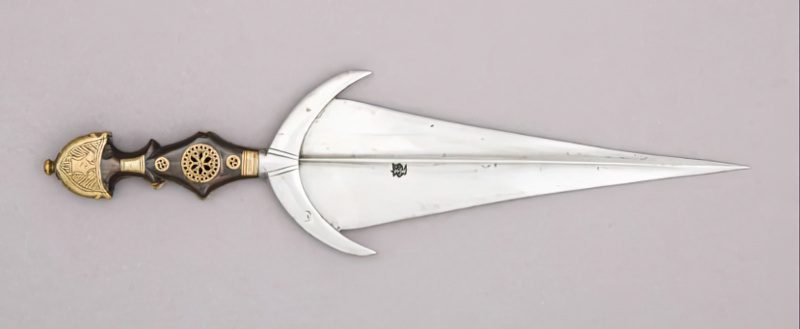
The Cinquedea sidearm’s pommel is usually round, but there can be other shapes and forms as well. The main and most important thing is that it was highly decorated, especially with various types of rare metals.
Scabbard
The scabbard of the CInqudea might have even more decorations than the sword itself. Usually, the fullers are shown on it as well as being colored in many different shades. The scabbard was most likely made out of wood, but there were also leather scabbards.
Size & Length
The typical length for the Cinqudea sword is around 22 inches (55 cm), but it can be as short as 10 inches (25 cm). When it is around 10 inches in length, it can also be called a Cinquedea Dagger. The widest part of the Cinquedea’s blade was about 3 inches (7.5 cm).
Weight
The overall weight of the Cinquedea short sword is around 1.4 lbs (630 grams). It is a relatively heavy shortsword for its length and size, but the added weight helps it be deadly against opponents.
Use of the Cinquedea Sword
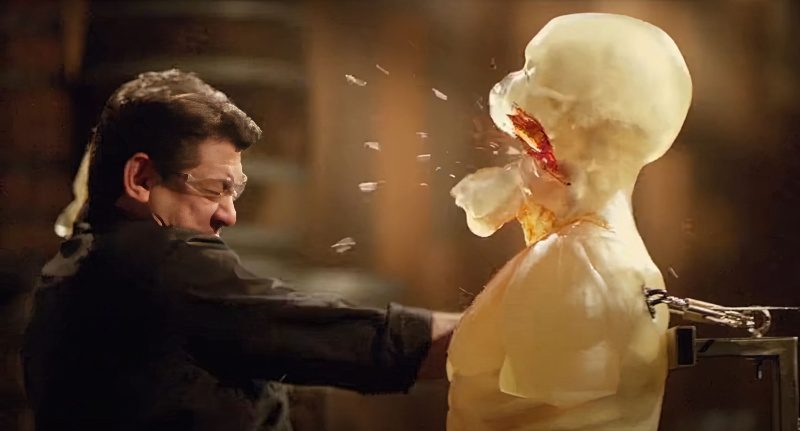
The Italian Cinquedea can either be a dagger or a short sword, depending on its length. Still, it falls into the short sword category meaning that it is primarily used as a one-handed weapon. It is double-edged, so it can be used for either slashing or thrusting strikes and can be used with very swift motions.
Self Defense
The Cinquedea was beloved and mostly used by townspeople all over Italy. It was a very short sword that could be carried either hanging or on the belt, or sometimes it was placed horizontally on the back of the belt. However, thanks to its small size, it could be concealed almost anywhere on a person and wasn’t limited to the belt.
Anti Armor
Some would say the reason why the Cinquedea sword was made in the manner that it is, is that it could pierce through the very thick and large armor that began appearing in the late medieval and renaissance periods. It has a wide blade and was heavy, helping it pierce through thinner armor.
Ceremonial & Nobility
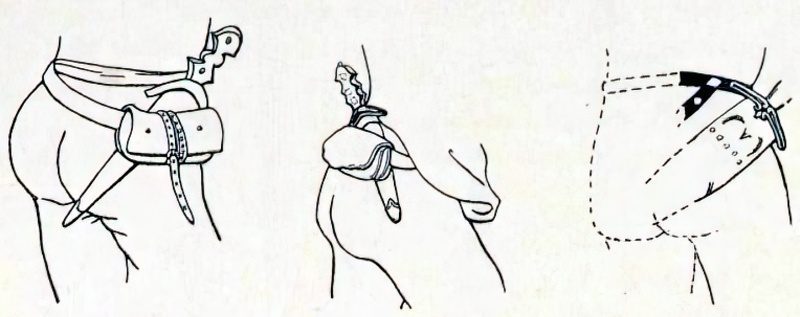
This was a Renaissance sword that attempted to bring something back with the looks of its blade from antiquity. That is why it is most often linked to the high nobility of Italy and highlighted in many parades displayed by gentlemen.
Many famous Italian persons from history had one. For example, Cesare Borgia had one that was highly decorated and more of an artistic type of sword than a typical warfare one. Some say that the broad blade was specifically for adding more decorations to the sword.
Modern
The Cinquedea today is one of the most recognizable swords from the Renaissance period. It can be seen across multiple types of media and is very popular in LARP and reenactments, usually wielded by the high-nobility.
It can be seen in many movies, anime as well as video games. Usually, it is represented as a very deadly dagger-like weapon, as seen in the Assasin’s Creed series, or sometimes shown as a regular sword-sized weapon.
History of the Cinquedea Sword
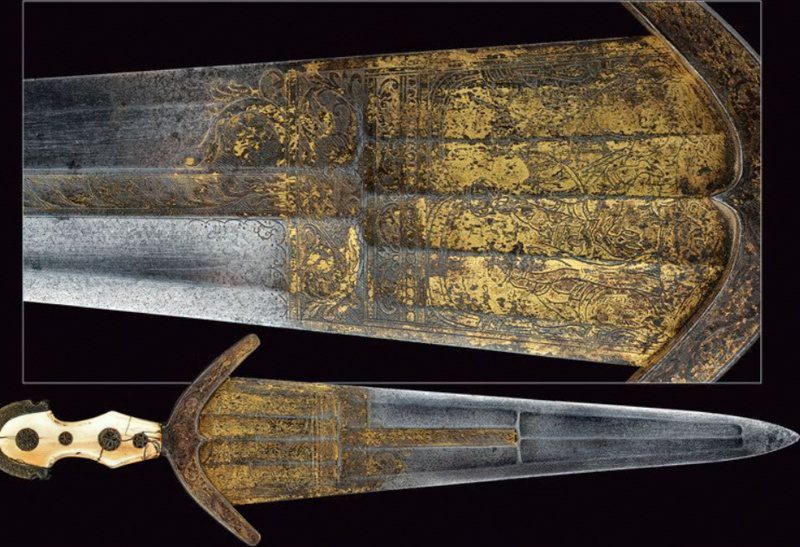
One of the most intriguing bladed weapons to have originated in Italy during the Italian Renaissance is the Cinquedea, often known as the “Five fingers” dagger or short sword. Between the late 1400s and the early 1500s, it had widespread popularity in northern Italy, and especially Milano. It lasted until the 16th century when it was almost entirely withdrawn from service.
The Cinquedea was a craze that lasted for perhaps fifty years of popularity at the most. From the beginning, it was intended to be more of a prestige symbol than a functional weapon. The wide blade was perfect for intricate metalworking and engraving because of its size. Its handle and scabbard were usually lavishly ornamented as well, frequently using gold and jewels in their designs.
The fact that it was so convenient to carry about was its primary benefit. This kept it out of the way while ensuring that it was still conveniently available. In contrast to the majority of daggers used during that era, it was equally adept in cutting and thrusting.
The Cinquedea is an effort to bring the renaissance to the sworded weapons as well as drawing many earlier designs from antiquity. That is why it is believed that it derives from the Roman Parazonium. Oakeshott, a medieval sword expert, asserts that the particular hilt design was inspired by the hilts of ancient swords and daggers.
Is Cinquedea a Sword or a Dagger?
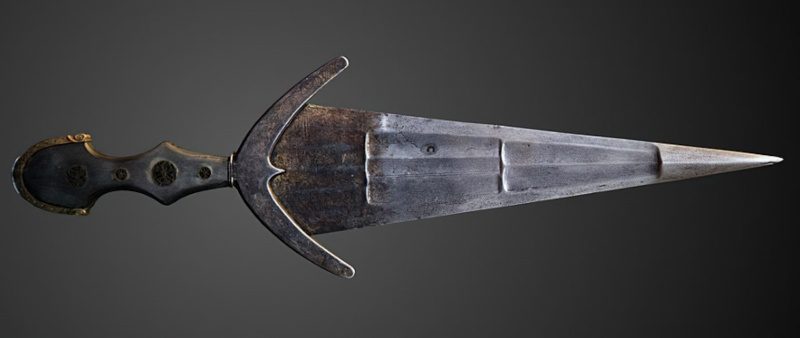
The Cinquedea is best described as a short sword or a long dagger. It really depends on the size and length of the Cinquedea itself. The typical length of the Cinquedea makes it a short sword, a weapon that can be used on its own or even combined with a shield. Also, it can be used as a thrusting tool but is much better as a slashing weapon thanks to its wide blade.
On the other hand, if the Cinquedea sword is short, around 10 inches (30 cm), it can easily fall inside the dagger category. However, it must be said that even at this size, using the Cinquedea as a slashing weapon will do much more damage than any dagger out there. Because of this, most people see the Cinquedea as a short sword and not a dagger.
Conclusion
Swords and daggers were no longer only utilitarian items; rather, they had transformed into canvases upon which the art and craft of the Italian Renaissance might be shown, and the best example of it is the artistic Cinquedea sword. Although it stopped being produced in mass in the early 16th century, today, it is a remarkable and very artistic sword that interests sword enthusiasts around the world.
